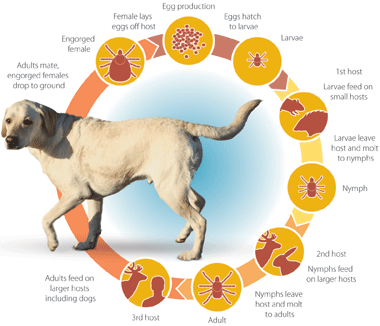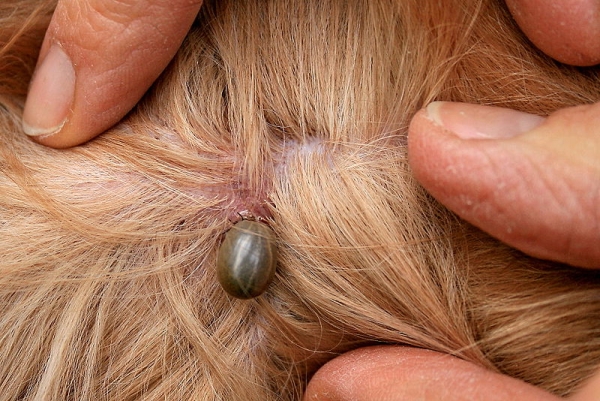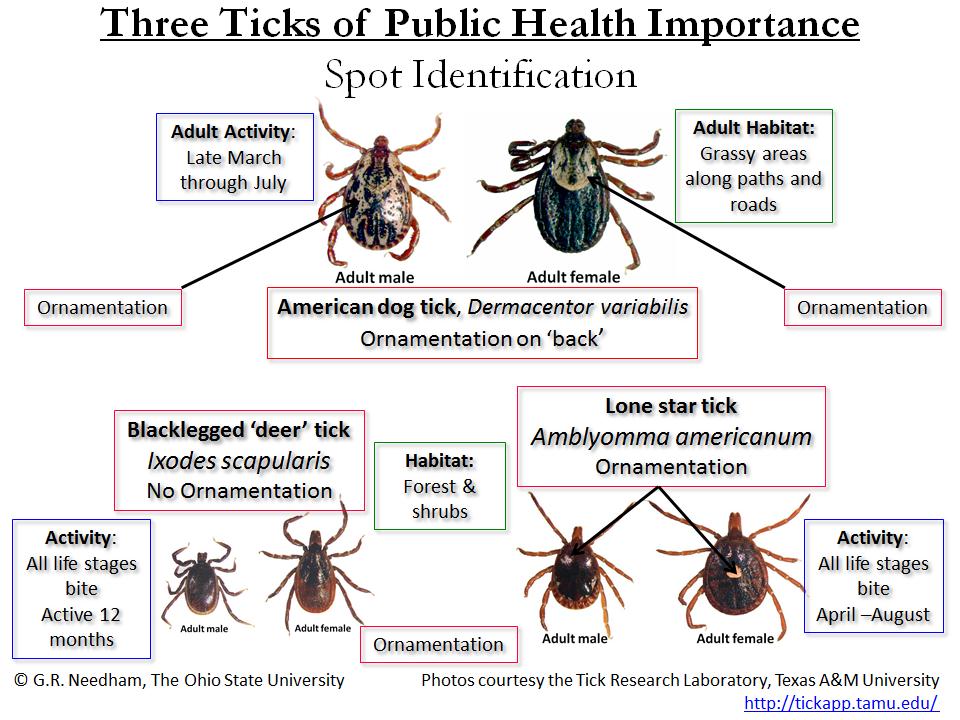
PREVENTING TICKS ON YOUR PETS!
Ticks are out! Keep your dogs protected. Stop in at Hillcrest Animal Clinic and pick up your tick treatment.
When you and your family enjoy the warm weather of spring and summer, don’t forget to take steps to help protect your dog against fleas and ticks.
The incidence of ticks seems to be on the rise in Ontario. This is creating concern among many pet owners, primarily due to the fear of ticks carrying Lyme disease. Although ticks can transmit diseases, they are usually nothing more than a nuisance. The best approach is to prevent them from embedding, and if embedded, to remove them quickly.

Most ticks found on dogs are ‘hard’ ticks. They have a hard shield just behind the mouthparts (sometimes called the ‘head’). Unfed hard ticks are shaped like a flat seed. Female ticks engorge with blood when attached and can significantly increase in size. Ticks do not burrow under the skin. Most types of ticks require three hosts during a two-year lifespan. Each tick stage requires a blood meal before it can reach the next stage.

The tick bite itself is not usually painful but the tick can transmit disease or cause tick paralysis. It takes several hours to days for an attached tick to transmit disease, so owners can usually prevent disease transmission by looking for and removing ticks on a regular basis.

Remember to check for ticks especially after walks in woods and tall grass.
The best way to find ticks on your dog is to run your hands over the whole body. Check for ticks every time your dog comes back from an area you know is inhabited by ticks. Ticks attach most frequently around the head, ears, neck and feet, but can be found anywhere on the body.
How to remove a tick from your pet!
Instructions and Video
http://www.petmd.com/dog/parasites/how-to-remove-a-tick-from-dog-cat
